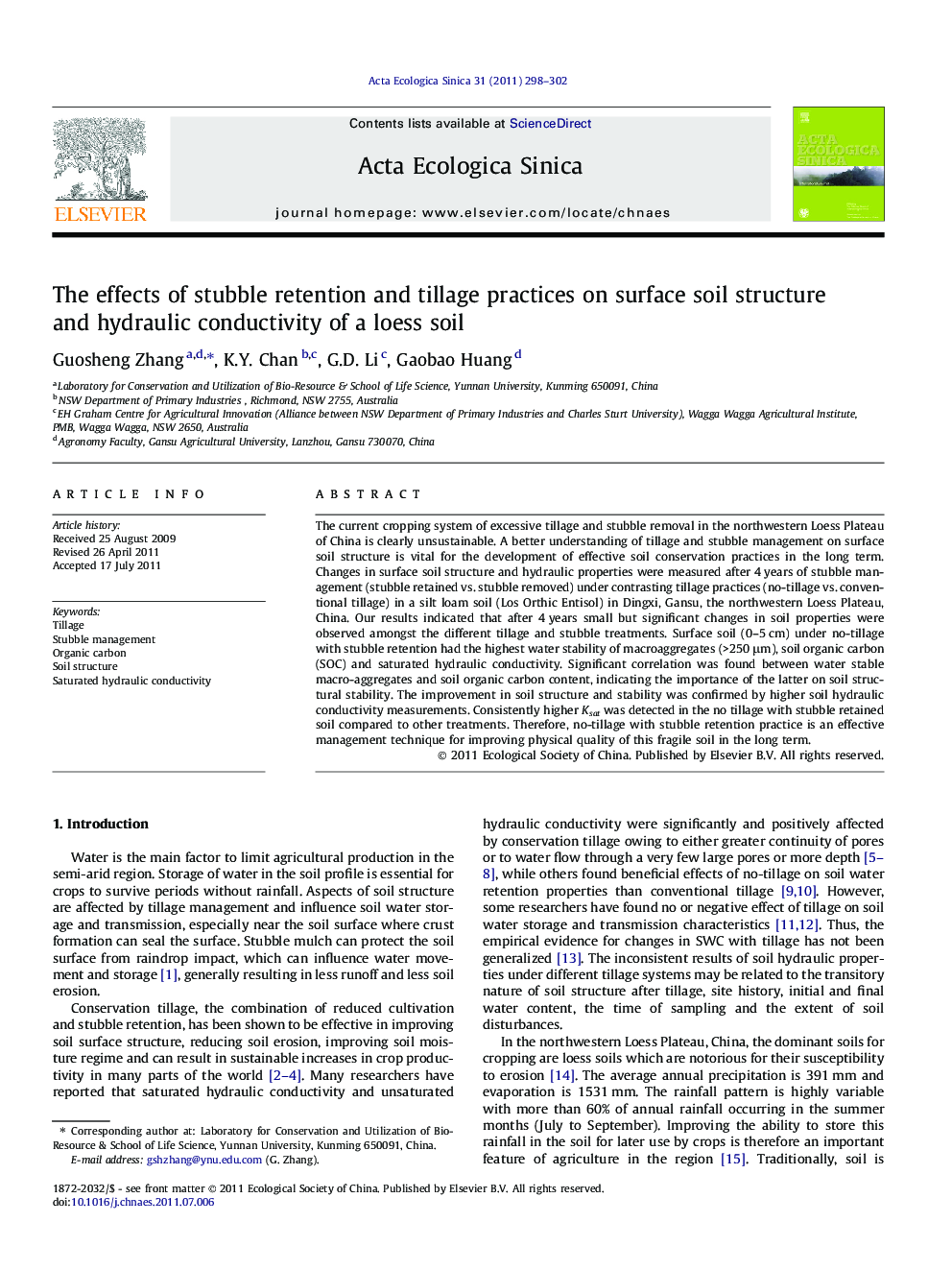| Article ID | Journal | Published Year | Pages | File Type |
|---|---|---|---|---|
| 4379903 | Acta Ecologica Sinica | 2011 | 5 Pages |
The current cropping system of excessive tillage and stubble removal in the northwestern Loess Plateau of China is clearly unsustainable. A better understanding of tillage and stubble management on surface soil structure is vital for the development of effective soil conservation practices in the long term. Changes in surface soil structure and hydraulic properties were measured after 4 years of stubble management (stubble retained vs. stubble removed) under contrasting tillage practices (no-tillage vs. conventional tillage) in a silt loam soil (Los Orthic Entisol) in Dingxi, Gansu, the northwestern Loess Plateau, China. Our results indicated that after 4 years small but significant changes in soil properties were observed amongst the different tillage and stubble treatments. Surface soil (0–5 cm) under no-tillage with stubble retention had the highest water stability of macroaggregates (>250 μm), soil organic carbon (SOC) and saturated hydraulic conductivity. Significant correlation was found between water stable macro-aggregates and soil organic carbon content, indicating the importance of the latter on soil structural stability. The improvement in soil structure and stability was confirmed by higher soil hydraulic conductivity measurements. Consistently higher Ksat was detected in the no tillage with stubble retained soil compared to other treatments. Therefore, no-tillage with stubble retention practice is an effective management technique for improving physical quality of this fragile soil in the long term.
